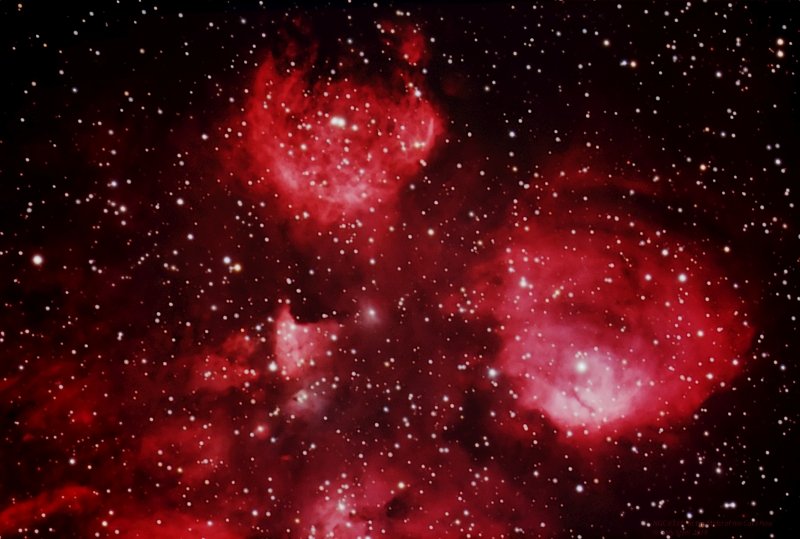The "Cat's Paw" Nebula can be found in Scorpius. NGC 6334 is relatively nearby, astronomically speaking - about 5.5 kly away from us - and, at 50 ly across, it is intrinsically large. Visually, it is covers a section of the sky that is approximately 40' x 23', which is slightly larger than the full moon.

It is another of those popular objects for astrophotographers, and for good reasons; it's big, bright, and has an interesting shape. In a wider view of the object, there is no mistaking why it was given its name. With this image, however, I chose a much closer framing of the object to show the stunning amount of nebulosity and activity taking place inside it. This is an incredibly productive stellar nursery; many of its stars are only a few million years old - mere babies! These hot new stars help provide the radiation that makes this emission nebula glow so brightly. At the other end of the stellar life cycle, information given out by the ESO suggests that the burst 'bubble' in the top of the image may be due to a star that is either at the end of its allotted time or has already exploded.
The Paw is reddish when photographed without a filter, but the deep red hue of this image is due primarily to the addition of H-alpha light to the mix. As I have mentioned elsewhere in this blog, H-alpha light is perceived by human beings as a very deep red (656.28 nm) part of the visible spectrum. When added to a 'normal' light image, it not only provides artistic interest, but, also, information about the amount and structure of ionised hydrogen gas in a region.
Photo stuff:
Date: 06 August 2019
R.A.: 17h 20m 14s
Dec. -36° 02' 39"
Canon 60Da on Meade RCX400 f/8 16" with 0.70 focal reducer
22 subs @ 300s ea., normal light; 23 subs @ 300s ea., Ha light; ISO 1600, all subs
